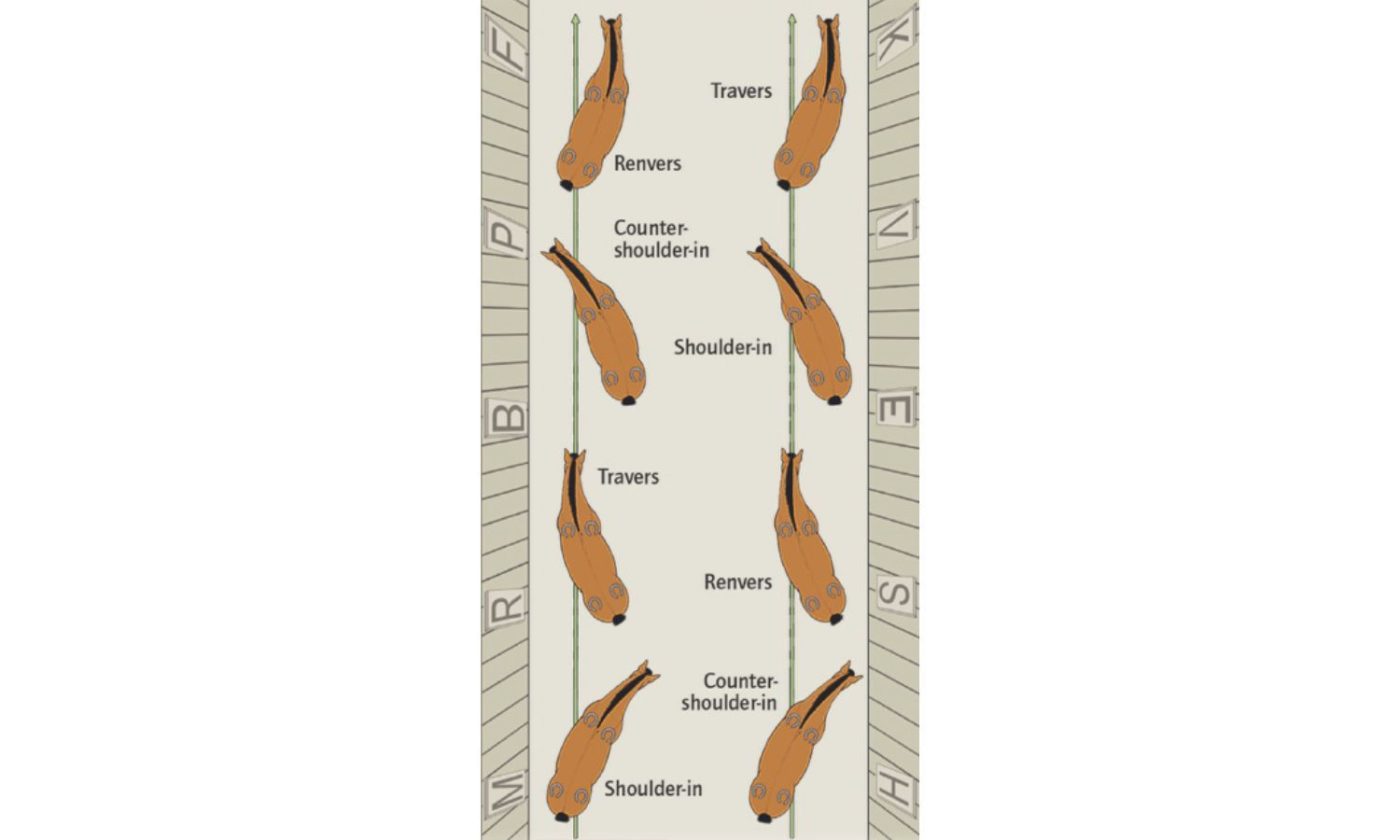

The following excerpt is from "Relaxation Exercises for Horses: A Guide to Soft, Supple, and Light," by Guillaume Henry, and published by Trafalgar Square Books.
Types of Relaxation Exercises
There are many, many relaxation exercises out there, if only because basic stretching and suppling movements can be infinitely combined and recombined with each other.
Here we will focus on full-body stretching aimed at the whole horse, involving the entire musculoskeletal system. These stretches are done in motion, with a calm, relaxed horse who’s in front of the leg, on the aids and on the bit.
These exercises can be divided, theoretically, into two categories:
– “Longitudinal” relaxation exercises, which mobilize the horse along the length of his body.
– Lateral relaxation exercises, which mobilize the sides of the horse’s body.
The Purpose of Longitudinal Relaxation Exercises
These exercises improve the flexibility of the vertebral column—and, as a result, increase the engagement of the hindquarters and the mobility of the hips—by enhancing the range of motion of the sacroiliac and coxo-femoral joints. These joints are what allows (or doesn’t allow) the horse to bring his hocks underneath his body to support his weight, and they give the horse control over how much ground he covers, through an increase or decrease in the energy transferred from his hindquarters. Beyond serving as the source of impulsion, the hips become “a genuine rudder that presides over changes in direction.”
The hindquarters are able to move laterally, and not through a passive “skidding” by the croup, but via the engagement of the haunches, and the lowering of the hip and flexion of the hock on one side.
The range of longitudinal relaxation exercises includes all transitions from one gait to another, or within the same gait (lengthening or collecting), from the simplest to the most complex; halting; backing; extending the neck; lowering the neck; counter-canter; and working on a slope (whether you’re going uphill or down).
The Purpose of Lateral Relaxation Exercises
These exercises relax and soften the horse’s sides and help the horse’s muscles work symmetrically; they also give the rider a greater ability to direct the haunches, and, as a result, straighten the horse. The basis for lateral stretches is working the horse on a circle; they should be tackled only once the horse maintains elastic contact with the rider’s hand at all times (when he is consistently “on the bit”), and when he understands the meaning of aids given with one leg only. These exercises will let the rider confirm whether the horse is round, and assess his position and the way in which he’s holding his back.
The range of lateral relaxation exercises includes, above all, voltes and work on a circle (15 meters maximum) and on curving lines, and all the exercises that are derived from those basics: larger or smaller circles, riding corners, serpentines, changes of direction, widening circles, and lateral movements of the hips or shoulders on a circle—which serve as the basis for the turn-on-the-forehand and turn-on-the-haunches.
Finally, the category of lateral relaxation exercises also includes the standard two-track lateral movements. In order of difficulty:
– Leg-yield.
– Shoulder-in and related exercises: shoulder-fore, shoulder-in on three tracks, shoulder-in on four tracks, counter-shoulder-fore, counter-shoulder-in on three tracks, counter-shoulder-in on four tracks.
– Half-pass and related exercises: haunches-in (travers) and haunches-out (renvers).
The Benefits of Work on Two Tracks
– It refines the horse’s responsiveness to the aids.
– It makes the horse more flexible as a whole, by increasing the freedom of the shoulders, the suppleness of the hindquarters, and the elasticity of the connection that runs from the mouth to the neck, down the neckline and along the back, to the hips.
– It improves rhythm and cadence.
– It harmonizes the horse’s balance and gait.
– It develops and increases the engagement of the hindquarters.
This excerpt is is reprinted with permission from Trafalgar Square Books. Purchase your copy here.
The United States Eventing Association (USEA) is pleased to announce the continued partnership with Canter Culture for the 2025 competition season.
The remaining two FEI divisions at the Virginia Horse Center Eventing horse trials, presented by Capital Square, wrapped up on Sunday with inaugural International wins for the leaders of both long-format divisions, the CCI2*-L and the CCI1*-L. Emily Hamel and her new partner, Kingston, won the CCI2*-L division on a score of 31.5. In the CCI1*-L, James Power took home the blue ribbon aboard Brambleridge Ponder the Truth with a score of 37.
Conditioning plans can vary from 12 weeks down to four weeks. The most important thing is to remember that the plan should fit the horse and rider, not vice versa. There are general templates but all schedules will look different and should be tailored to you and your horse’s specific needs.
Fear is a word we’ve all experienced and one that can leave the best of us feeling a bit belittled and bewildered. It’s also one of the most misunderstood of all emotions.